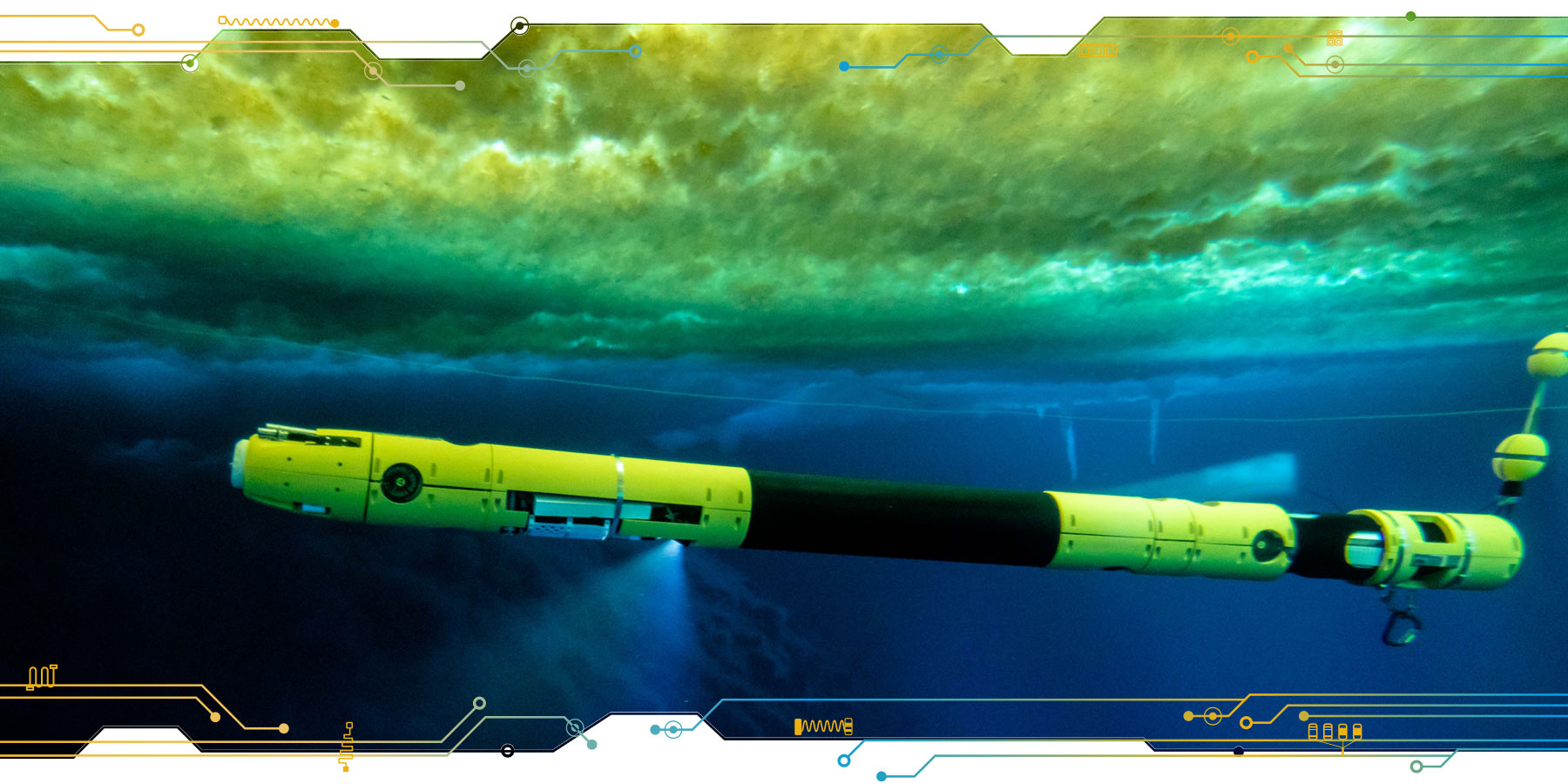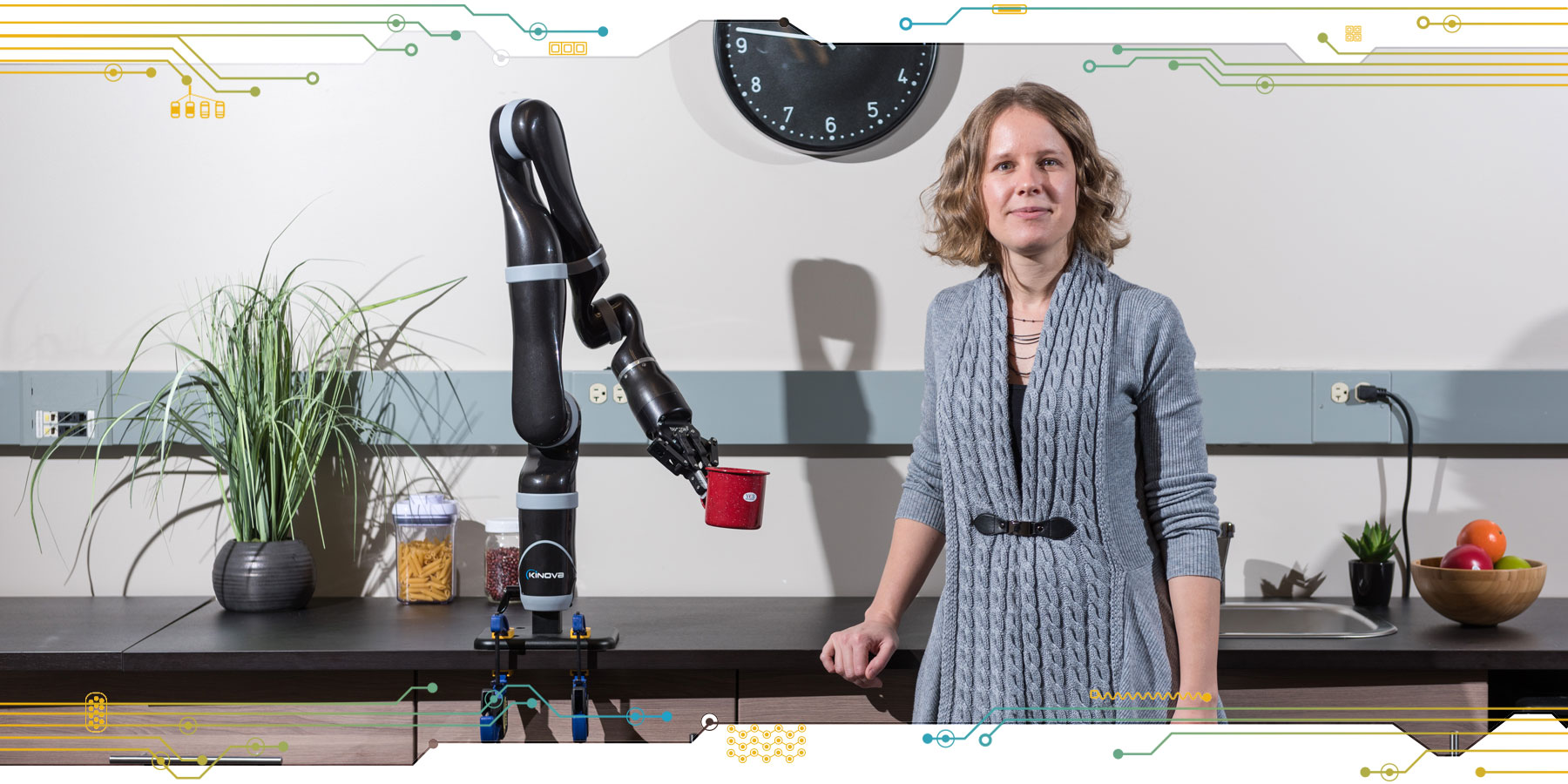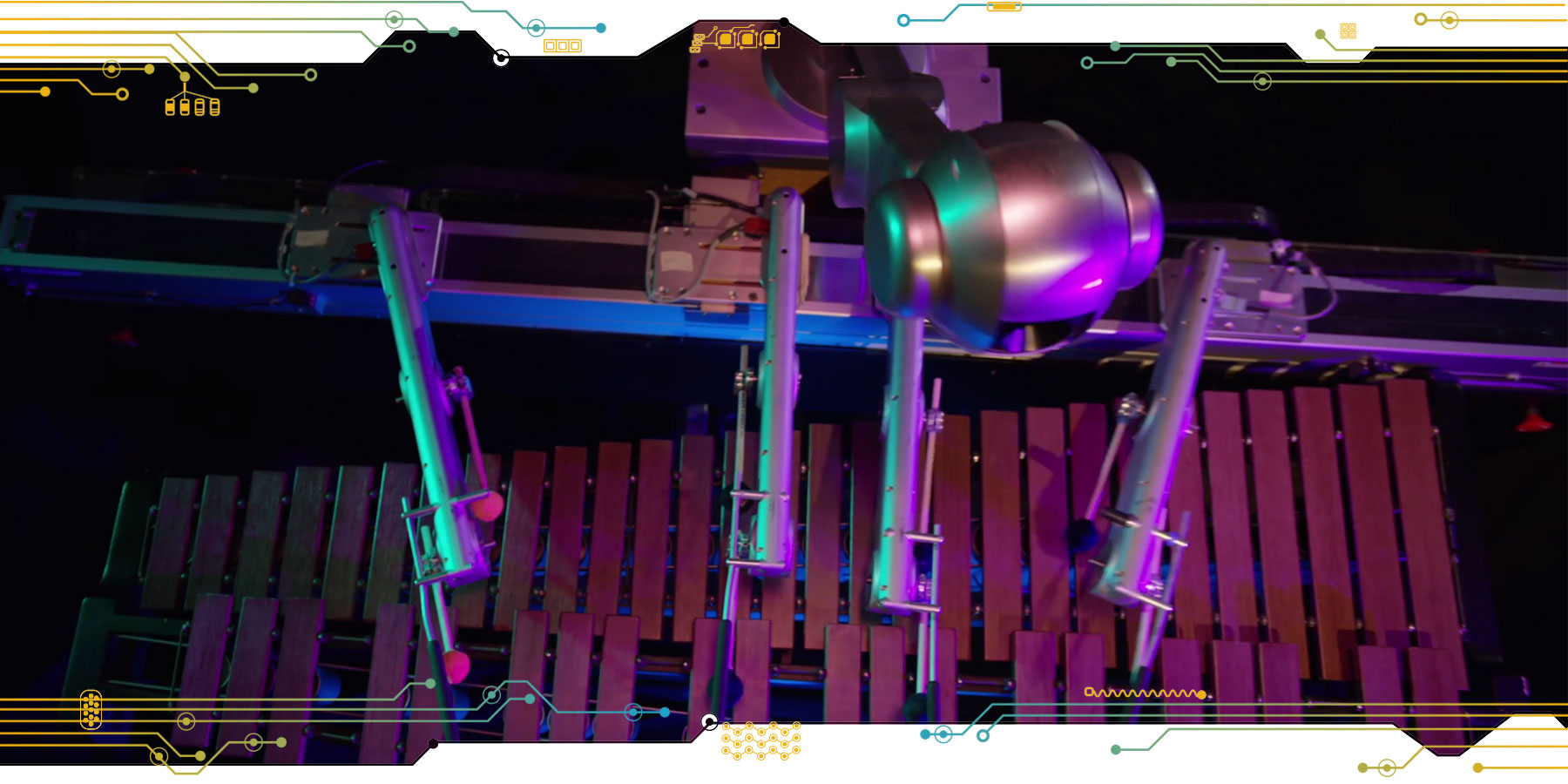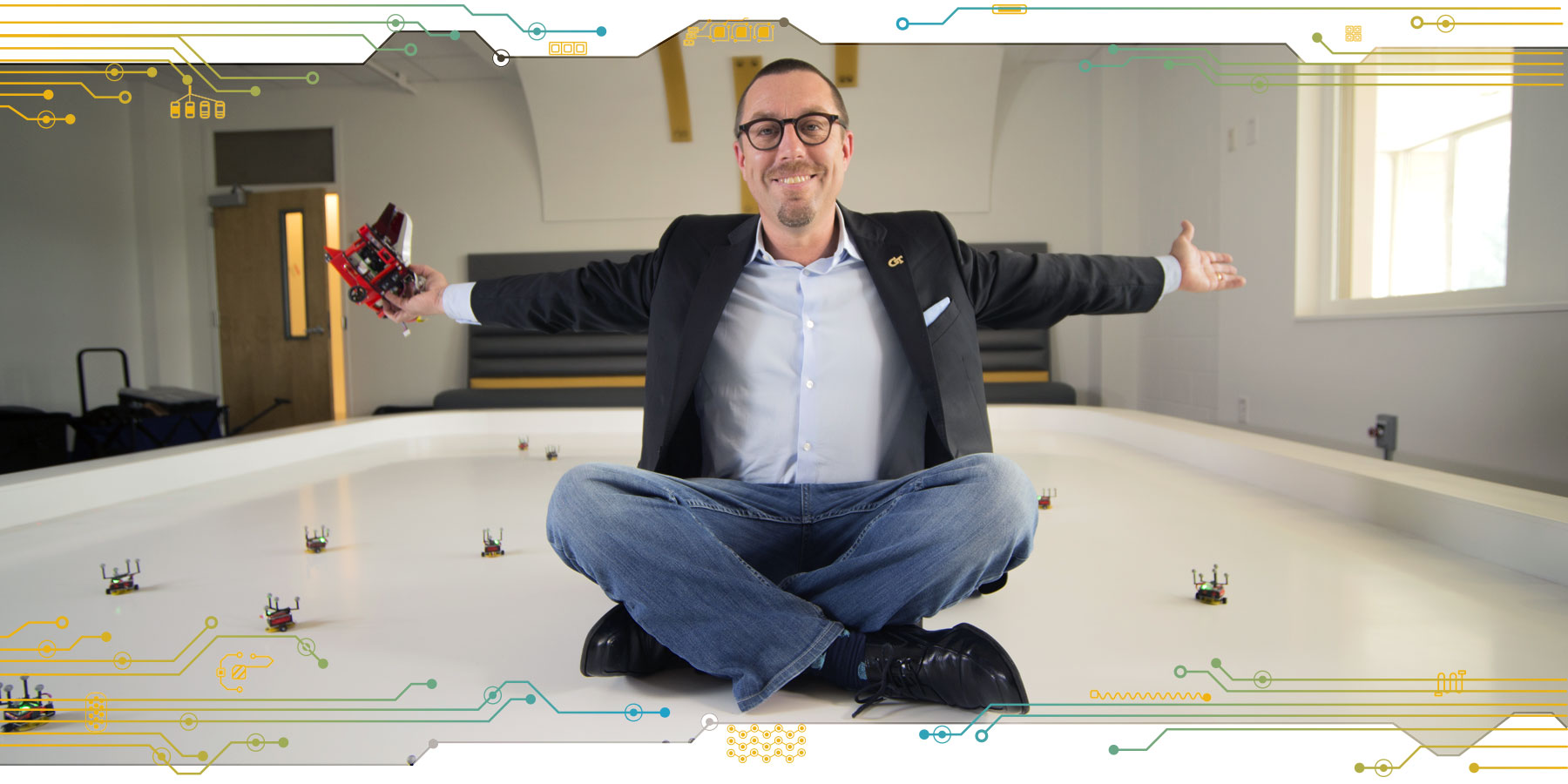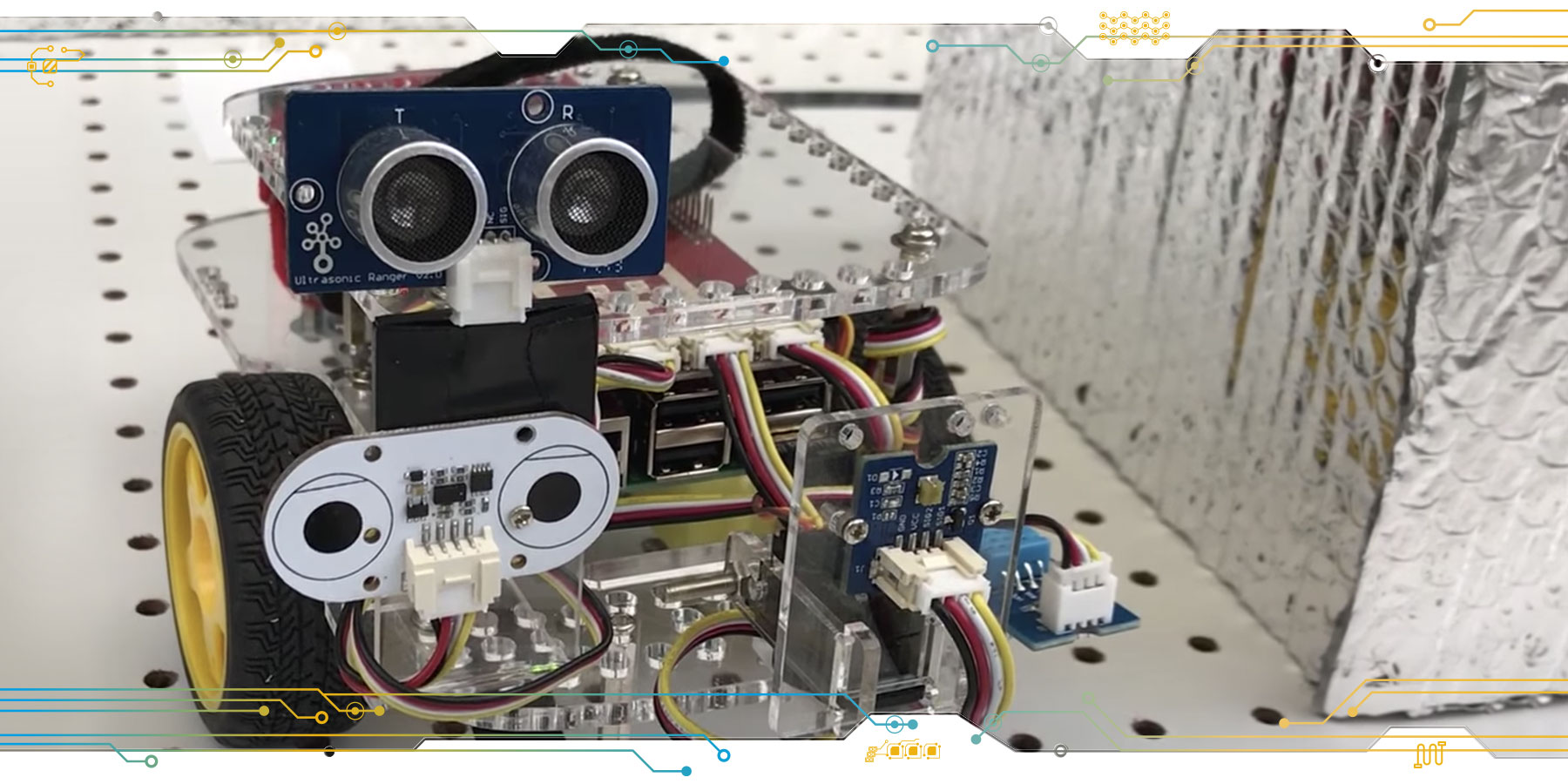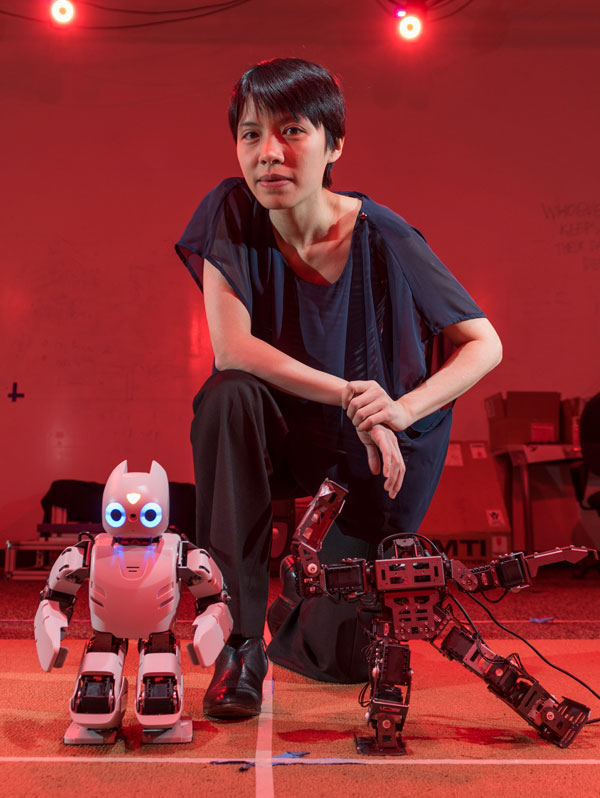What's Up Now with Those Robots?
By Brigitte Espinet | Published April 9, 2018
In the same way that activities for National Robotics Week come in all shapes and sizes, the robotics work in motion at Georgia Tech takes all forms.
Three years ago, in recognition of 2015 RoboWeek, we posted 7 Cool Things about Robots to share a sampling of the advances being made by our faculty and students in this fascinating realm of research. Scroll down for an update to some of these and find out about a few new projects that have launched since.
The Icefin RISE UP
We first reported on this robotic vehicle back in 2015 when it dove to unexplored depths in Antarctica to measure ocean conditions and observe life under the ice.
It has since undergone some upgrades, and School of Earth and Atmospheric Sciences Assistant Professor Britney Schmidt and her research team returned for further data gathering under Antarctica’s Ross Ice Shelf during an October 2017-January 2018 trip. Now dubbed the Ross Ice Shelf and Europa Underwater Probe (RISE UP), this research in Antarctica is preparation for exploration of Jupiter’s moon Europa, possibly by 2040. A machine similar to Icefin could plunge through the icy moon’s frozen crust to explore its subsurface liquid ocean.
“By studying how ice and water interact in environments on Earth, we can better understand the surface indications of such on Europa — and other icy worlds,” says Schmidt.
Her Planetary Habitability & Technology Lab blog chronicles this recent three-month research adventure and shares coverage from news outlets such as Popular Mechanics and NewsHub.
Point-and-Click Progress
Remotely controlling robots is a cinch for roboticists. But for the nonexpert, not so much.
The traditional interface — involving the use of a computer screen and mouse along with a series of rotations, lowering and raising arrows, adjusting the grip, and guessing the correct depth of field to get the robot to maneuver just so — is not necessarily the most user-friendly method, especially if the user happens to be an elderly individual at home alone trying to control an assistive robot.
Enter School of Interactive Computing’s Sonia Chernova and her team of researchers from the Robot Autonomy and Interactive Learning (RAIL) research lab. They have devised a much simpler point-and-click method, which is more efficient and doesn’t require significant training time. The user simply points and clicks on an item, then chooses a grasp. The robot does the rest of the work.
Shimon Shenanigans
Our 2015 RoboWeek feature highlighted the robotic prosthesis — from College of Design Professor Gil Weinberg’s lab — that restored the drumming capabilities of a musician who had undergone amputation following an electrocution accident in 2012. Work coming out of Weinberg’s lab continues to make headlines, with the robot known as Shimon. Introduced eight years ago, Shimon has graduated from “listening” to music played by humans and improvising over precomposed chord progressions to writing and playing its own compositions.
Created by Weinberg and trained by (then Ph.D. student) Mason Bretan, Shimon is able to generate music using artificial intelligence and deep learning, representing “the first time a robot has used deep learning to create music,” said Bretan, who graduated with his Ph.D. in music technology in 2017. The robot uses songs from well-known artists and composers, such as Mozart, the Beatles, and Lady Gaga, to learn how music is put together by humans. It then uses that knowledge to write its own compositions.
Robots for All in the Robotarium
In 7 Cool Things about Robots, the School of Electrical and Computer Engineering’s Magnus Egerstedt is featured for his work on swarm robotics, which continues to be a primary focus for him. But, the Schlumberger Professor is also very passionate about making robotics research accessible to everyone, and his robots-for-all concept manifested in August 2017 in the form of the Robotarium. The $2.5 million lab, funded by the National Science Foundation and Office of Naval Research, houses nearly 100 rolling and flying swarm robots that are remotely and freely accessible to anyone. Georgia Tech is the only university to offer such a facility.
To date, researchers from Japan, India, Australia, and dozens of countries around the world, including the U.S., have remotely run experiments with Georgia Tech’s robots.
“Over the past five years, robotics at Georgia Tech has gone from a collection of isolated activities to a coordinated, large-scale, multidisciplinary presence that truly is at the forefront in a number of areas such as autonomous vehicles, robotic manufacturing, and medical robotics. Our unique mixture of basic research and robustly deployed systems allows us to tackle the hardest and most pressing issues in robotics, which will ultimately ensure that the tools and technologies we develop will make the human experience richer,” says Egerstedt.

HoneyBot and the Hackers
Spoofing the spoofers is one way to try combatting cybersecurity challenges that factories and other large facilities could potentially face in an age rife with hacking horrors.
That’s where the HoneyBot comes in.
The shoebox-sized device is essentially a decoy robot meant to fool hackers into giving up information that can help cybersecurity professionals study them, determine what methods they are using, and ascertain where or even who they are — ultimately helping companies further secure their networks.
CREDITS
Photography: JRISEUP/J.Lawrence (Icefin), Rob Felt, Christopher Moore
Design: Monet Fort

